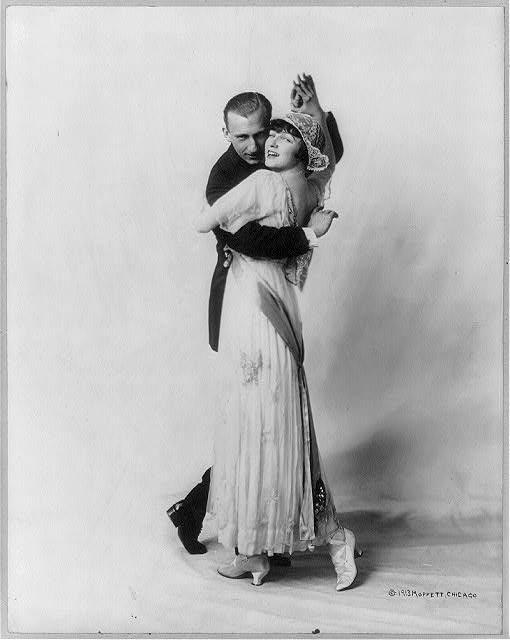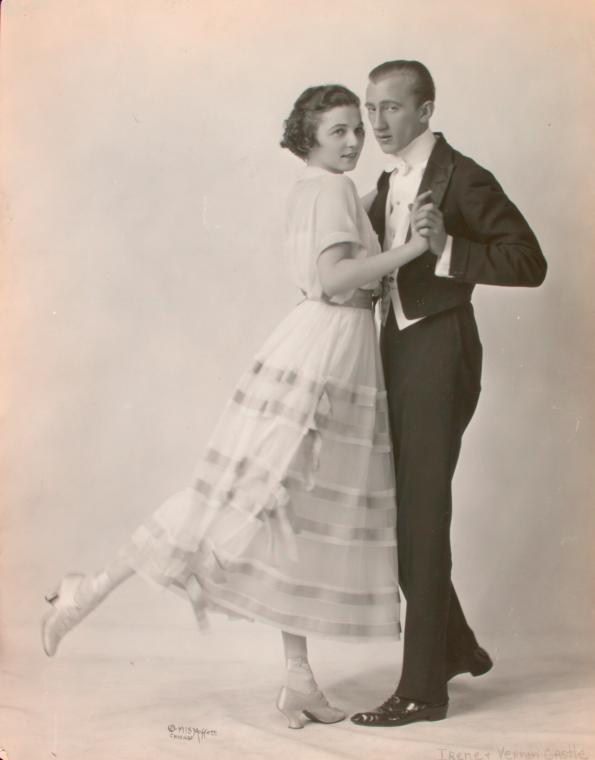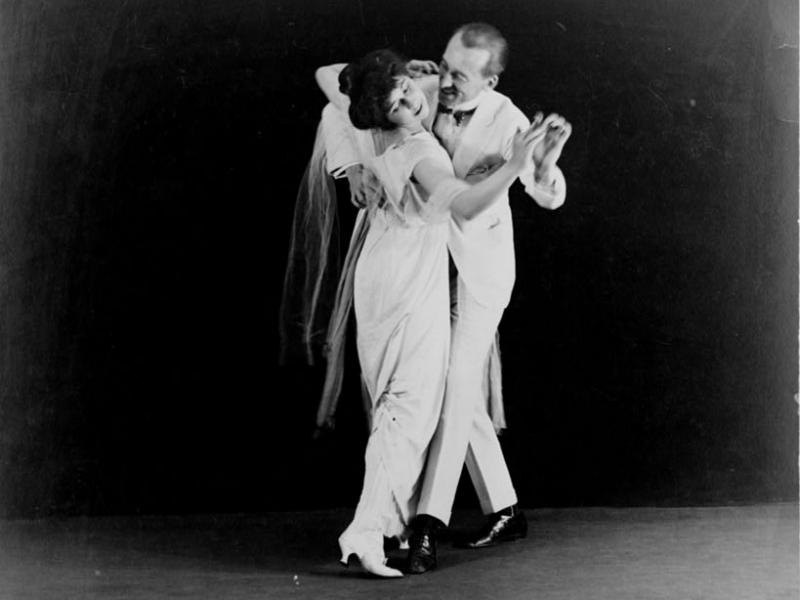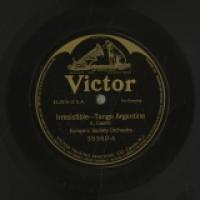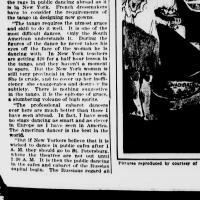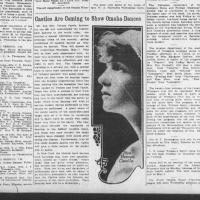Vernon and Irene Castle
PerformerHusband and wife ballroom dancing partners William Vernon Blythe and Irene Foote, known by their stage names Vernon and Irene Castle, were superstars in the early twentieth century, and are widely credited for reviving modern partner and social dance in the United States. The couple made their mark on the Vaudeville stage, and helped popularized ragtime, jazz, and other African-American music in ballroom dance. In an era of segregation, the Castles broke barriers and toured with James Reese Europe’s Society Orchestra (composed of black musicians), bringing white elite audiences to these performances.
The Castles popularized the foxtrot, a dance style attributed to African American dance traditions, in the 1914 Irving Berlin musical “Watch Your Step.” According to WC Handy in his 1945 autobiography Father of the Blues, James Reese Europe would often play Handy’s “Memphis Blues” slowly during intermissions and was intrigued by the piece’s rhythms. Europe suggested that the couple create a new slow dance to adapt to the tune. Drawing from African-American dance traditions and their own choreographic sensibilities, the couple popularized the dance now known as the foxtrot.
The Castle’s influence on social dance in the United States also became a transnational phenomenon. While touring Paris, the couple helped spread American and African American music and dance styles around the world.
The Castles popularized the foxtrot, a dance style attributed to African American dance traditions, in the 1914 Irving Berlin musical “Watch Your Step.” According to WC Handy in his 1945 autobiography Father of the Blues, James Reese Europe would often play Handy’s “Memphis Blues” slowly during intermissions and was intrigued by the piece’s rhythms. Europe suggested that the couple create a new slow dance to adapt to the tune. Drawing from African-American dance traditions and their own choreographic sensibilities, the couple popularized the dance now known as the foxtrot.
The Castle’s influence on social dance in the United States also became a transnational phenomenon. While touring Paris, the couple helped spread American and African American music and dance styles around the world.
